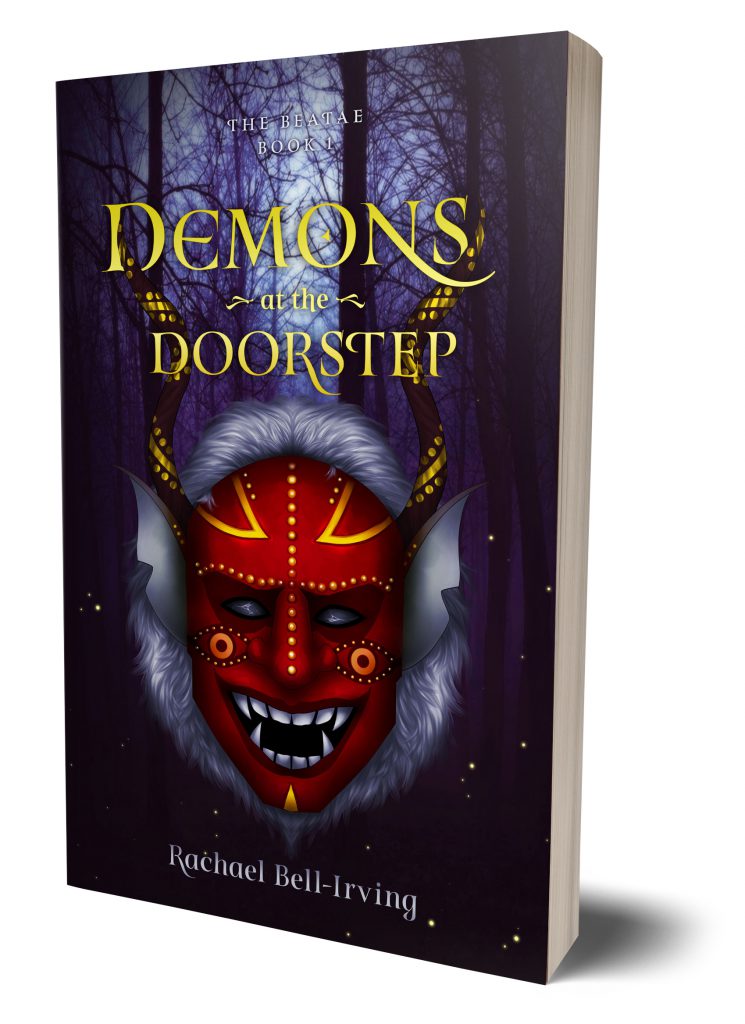The behind the scenes creative process to achieve this incredible YA fantasy cover design – Demons at the Doorstep
Guest post by Tellwell designer Tara Price
Demons at the Doorstep is a young adult urban fantasy. Written by Rachael Bell-Irving, the story follows Jessica, a witch who must team up with her mortal enemy to stop mutated demons from destroying her city. Hard copies and eBooks are now available on Amazon, Barnes and Noble and Chapters Indigo.
Why did you choose this cover as a monthly focus?
This was a book that I started working on at the end of last year that wrapped up mid-April. It was a little out of our normal process because it required a custom illustration. A lot of the time, the cover is either done first or designed in tandem with the interior. For this one the interior was formatted well before the illustration was done. I had an initial idea of what I wanted for the title, but I knew that it may change drastically when the cover was on my plate. However, once I saw this amazing image, I was able to work in the title surprisingly well, with only minor re-working on spacing.





